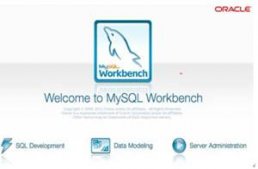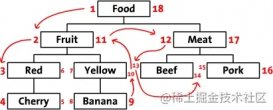环境介绍
| 名称 | 版本 | 操作系统 | IP | 备注 |
|---|---|---|---|---|
| K8S集群 | 1.20.15 | Centos7.9 | 192.168.11.21 192.168.11.22 192.168.11.23 | 21为k8s-master 22为k8s-node01 23为k8s-node02 |
| MySql | 5.7 | Centos7.9 | 一主两从 | |
| nfs服务器 | Centos7.9 | 192.168.11.24 | 共享目录为/nfs |
一、部署NFS服务器
11.24:
1.创建NFS共享目录
|
1
|
mkdir -p /nfs |
2.安装NFS服务
|
1
|
yum -y install nfs-utils rpcbind |
3.编辑NFS配置
|
1
|
echo "/nfs *(rw,async,no_root_squash)" >>/etc/exports |
4.启动服务
|
1
2
|
systemctl enable --now nfs-serversystemctl enable --now rpcbind |
5.验证
|
1
|
showmount -e ##看是否能看到/nfs *字段;如果没有该命令yum -y install showmount |
11.21/22/23(所有K8S节点):
1.安装NFS
|
1
|
yum -y install nfs-utils |
2.测试是否能检测到NFS共享目录
|
1
|
showmount -e 192.168.11.24 ##看是否能看到/nfs * |
二、创建PV
11.21:
1、创建存放MySQL的yaml清单目录
|
1
2
|
mkdir -p /webappcd /webapp |
2、创建NFS的YAML文件
vim nfs-client.yaml
|
1
2
3
4
5
6
7
8
9
10
11
12
13
14
15
16
17
18
19
20
21
22
23
24
25
26
27
28
29
30
31
32
33
34
35
36
37
38
39
|
apiVersion: apps/v1kind: Deploymentmetadata: name: nfs-client-provisioner labels: app: nfs-client-provisioner # replace with namespace where provisioner is deployed namespace: defaultspec: replicas: 1 strategy: type: Recreate selector: matchLabels: app: nfs-client-provisioner template: metadata: labels: app: nfs-client-provisioner spec: serviceAccountName: nfs-client-provisioner containers: - name: nfs-client-provisioner image: registry.cn-beijing.aliyuncs.com/xngczl/nfs-subdir-external-provisione:v4.0.0 volumeMounts: - name: nfs-client-root mountPath: /persistentvolumes env: - name: PROVISIONER_NAME value: fuseim.pri/ifs #注意这个值,可以自定义 - name: NFS_SERVER value: 192.168.11.24 ##IP不同修改此处 - name: NFS_PATH value: /nfs ##nfs共享目录 volumes: - name: nfs-client-root nfs: server: 192.168.11.24 ##IP不同修改此处 path: /nfs ##nfs共享目录 |
创建rbac
vim nfs-client-rbac.yaml
|
1
2
3
4
5
6
7
8
9
10
11
12
13
14
15
16
17
18
19
20
21
22
23
24
25
26
27
28
29
30
31
32
33
34
35
36
37
38
39
40
41
42
43
44
45
46
47
48
49
50
51
52
53
54
55
56
57
58
59
60
61
62
63
64
65
66
67
68
|
apiVersion: v1kind: ServiceAccountmetadata: name: nfs-client-provisioner # replace with namespace where provisioner is deployed namespace: default---kind: ClusterRoleapiVersion: rbac.authorization.k8s.io/v1metadata: name: nfs-client-provisioner-runnerrules: - apiGroups: [""] resources: ["nodes"] verbs: ["get", "list", "watch"] - apiGroups: [""] resources: ["persistentvolumes"] verbs: ["get", "list", "watch", "create", "delete"] - apiGroups: [""] resources: ["persistentvolumeclaims"] verbs: ["get", "list", "watch", "update"] - apiGroups: ["storage.k8s.io"] resources: ["storageclasses"] verbs: ["get", "list", "watch"] - apiGroups: [""] resources: ["events"] verbs: ["create", "update", "patch"]---kind: ClusterRoleBindingapiVersion: rbac.authorization.k8s.io/v1metadata: name: run-nfs-client-provisionersubjects: - kind: ServiceAccount name: nfs-client-provisioner # replace with namespace where provisioner is deployed namespace: defaultroleRef: kind: ClusterRole name: nfs-client-provisioner-runner apiGroup: rbac.authorization.k8s.io---kind: RoleapiVersion: rbac.authorization.k8s.io/v1metadata: name: leader-locking-nfs-client-provisioner # replace with namespace where provisioner is deployed namespace: defaultrules: - apiGroups: [""] resources: ["endpoints"] verbs: ["get", "list", "watch", "create", "update", "patch"]---kind: RoleBindingapiVersion: rbac.authorization.k8s.io/v1metadata: name: leader-locking-nfs-client-provisioner # replace with namespace where provisioner is deployed namespace: defaultsubjects: - kind: ServiceAccount name: nfs-client-provisioner # replace with namespace where provisioner is deployed namespace: defaultroleRef: kind: Role name: leader-locking-nfs-client-provisioner apiGroup: rbac.authorization.k8s.io |
创建sc
vim nfs-client-class.yaml
|
1
2
3
4
|
apiVersion: storage.k8s.io/v1kind: StorageClassmetadata: name: course-nfs-storage |
启动:
|
1
2
3
4
5
6
7
8
9
|
kubectl apply -f nfs-client.yaml kubectl apply -f nfs-client-rbac.yamlkubectl apply -f nfs-client-class.yaml kubectl get po,scNAME READY STATUS RESTARTS AGEpod/nfs-client-provisioner-8579c9d69b-m6vp4 1/1 Running 0 13mNAME PROVISIONER RECLAIMPOLICY VOLUMEBINDINGMODE ALLOWVOLUMEEXPANSION AGEstorageclass.storage.k8s.io/course-nfs-storage fuseim.pri/ifs Delete Immediate false 13m |
三、编写MySQL的yaml文件
11.21:
|
1
2
|
mkdir -p /weapp/mysqlcd /weapp/mysql |
创建CM
```bash
vim mysql-configmap.yaml
|
1
2
3
4
5
6
7
8
9
10
11
12
13
14
15
|
apiVersion: v1kind: ConfigMapmetadata: name: mysql labels: app: mysqldata: master.cnf: | # Apply this config only on the master. [mysqld] log-bin slave.cnf: | # Apply this config only on slaves. [mysqld] super-read-only |
此文件定义了两个MySQL的配置文件
1.是master.cnf,开启了log-bin。开启二进制日志文件后才能进行主从复制
2.slave.cnf,开启了super-read-only,表示从节点只能读,不能进行其他操作。
两个文件以配置文件形式挂载到mysql容器中`
创建MySQL的Service
vim mysql-services.yaml
|
1
2
3
4
5
6
7
8
9
10
11
12
13
14
15
16
17
18
19
20
21
22
23
24
25
26
27
28
|
apiVersion: v1kind: Servicemetadata: name: mysql labels: app: mysqlspec: ports: - name: mysql port: 3306 clusterIP: None selector: app: mysql---# Client service for connecting to any MySQL instance for reads.# For writes, you must instead connect to the master: mysql-0.mysql.apiVersion: v1kind: Servicemetadata: name: mysql-read labels: app: mysqlspec: ports: - name: mysql port: 3306 selector: app: mysql |
创MySQL的StatefulSet
vim mysql-statefulset.yaml
|
1
2
3
4
5
6
7
8
9
10
11
12
13
14
15
16
17
18
19
20
21
22
23
24
25
26
27
28
29
30
31
32
33
34
35
36
37
38
39
40
41
42
43
44
45
46
47
48
49
50
51
52
53
54
55
56
57
58
59
60
61
62
63
64
65
66
67
68
69
70
71
72
73
74
75
76
77
78
79
80
81
82
83
84
85
86
87
88
89
90
91
92
93
94
95
96
97
98
99
100
101
102
103
104
105
106
107
108
109
110
111
112
113
114
115
116
117
118
119
120
121
122
123
124
125
126
127
128
129
130
131
132
133
134
135
136
137
138
139
140
141
142
143
144
145
146
147
148
149
150
151
152
153
154
155
156
157
158
159
160
161
162
163
164
165
166
167
|
apiVersion: apps/v1kind: StatefulSetmetadata: name: mysqlspec: selector: matchLabels: app: mysql serviceName: mysql replicas: 3 template: metadata: labels: app: mysql spec: initContainers: - name: init-mysql image: mysql:5.7 command: - bash - "-c" - | set -ex # Generate mysql server-id from pod ordinal index. [[ `hostname` =~ -([0-9]+)$ ]] || exit 1 ordinal=${BASH_REMATCH[1]} echo [mysqld] > /mnt/conf.d/server-id.cnf # Add an offset to avoid reserved server-id=0 value. echo server-id=$((100 + $ordinal)) >> /mnt/conf.d/server-id.cnf # Copy appropriate conf.d files from config-map to emptyDir. if [[ $ordinal -eq 0 ]]; then cp /mnt/config-map/master.cnf /mnt/conf.d/ else cp /mnt/config-map/slave.cnf /mnt/conf.d/ fi volumeMounts: - name: conf mountPath: /mnt/conf.d - name: config-map mountPath: /mnt/config-map - name: clone-mysql image: fxkjnj/xtrabackup:1.0 command: - bash - "-c" - | set -ex # Skip the clone if data already exists. [[ -d /var/lib/mysql/mysql ]] && exit 0 # Skip the clone on master (ordinal index 0). [[ `hostname` =~ -([0-9]+)$ ]] || exit 1 ordinal=${BASH_REMATCH[1]} [[ $ordinal -eq 0 ]] && exit 0 # Clone data from previous peer. ncat --recv-only mysql-$(($ordinal-1)).mysql 3307 | xbstream -x -C /var/lib/mysql # Prepare the backup. xtrabackup --prepare --target-dir=/var/lib/mysql volumeMounts: - name: data mountPath: /var/lib/mysql subPath: mysql - name: conf mountPath: /etc/mysql/conf.d containers: - name: mysql image: mysql:5.7 env: - name: MYSQL_ALLOW_EMPTY_PASSWORD value: "1" ports: - name: mysql containerPort: 3306 volumeMounts: - name: data mountPath: /var/lib/mysql subPath: mysql - name: conf mountPath: /etc/mysql/conf.d resources: requests: cpu: 500m memory: 1Gi livenessProbe: exec: command: ["mysqladmin", "ping"] initialDelaySeconds: 30 periodSeconds: 10 timeoutSeconds: 5 readinessProbe: exec: # Check we can execute queries over TCP (skip-networking is off). command: ["mysql", "-h", "127.0.0.1", "-e", "SELECT 1"] initialDelaySeconds: 5 periodSeconds: 2 timeoutSeconds: 1 - name: xtrabackup image: fxkjnj/xtrabackup:1.0 ports: - name: xtrabackup containerPort: 3307 command: - bash - "-c" - | set -ex cd /var/lib/mysql # Determine binlog position of cloned data, if any. if [[ -f xtrabackup_slave_info && "x$(<xtrabackup_slave_info)" != "x" ]]; then # XtraBackup already generated a partial "CHANGE MASTER TO" query # because we're cloning from an existing slave. (Need to remove the tailing semicolon!) cat xtrabackup_slave_info | sed -E 's/;$//g' > change_master_to.sql.in # Ignore xtrabackup_binlog_info in this case (it's useless). rm -f xtrabackup_slave_info xtrabackup_binlog_info elif [[ -f xtrabackup_binlog_info ]]; then # We're cloning directly from master. Parse binlog position. [[ `cat xtrabackup_binlog_info` =~ ^(.*?)[[:space:]]+(.*?)$ ]] || exit 1 rm -f xtrabackup_binlog_info xtrabackup_slave_info echo "CHANGE MASTER TO MASTER_LOG_FILE='${BASH_REMATCH[1]}',\ MASTER_LOG_POS=${BASH_REMATCH[2]}" > change_master_to.sql.in fi # Check if we need to complete a clone by starting replication. if [[ -f change_master_to.sql.in ]]; then echo "Waiting for mysqld to be ready (accepting connections)" until mysql -h 127.0.0.1 -e "SELECT 1"; do sleep 1; done echo "Initializing replication from clone position" mysql -h 127.0.0.1 \ -e "$(<change_master_to.sql.in), \ MASTER_HOST='mysql-0.mysql', \ MASTER_USER='root', \ MASTER_PASSWORD='', \ MASTER_CONNECT_RETRY=10; \ START SLAVE;" || exit 1 # In case of container restart, attempt this at-most-once. mv change_master_to.sql.in change_master_to.sql.orig fi # Start a server to send backups when requested by peers. exec ncat --listen --keep-open --send-only --max-conns=1 3307 -c \ "xtrabackup --backup --slave-info --stream=xbstream --host=127.0.0.1 --user=root" volumeMounts: - name: data mountPath: /var/lib/mysql subPath: mysql - name: conf mountPath: /etc/mysql/conf.d resources: requests: cpu: 100m memory: 100Mi volumes: - name: conf emptyDir: {} - name: config-map configMap: name: mysql volumeClaimTemplates: - metadata: name: data spec: storageClassName: "course-nfs-storage" accessModes: ["ReadWriteOnce"] resources: requests: storage: 0.5Gi |
- 使用xtrbackup工具进行初始化数据的备份
- 使用linux自带的ncat工具进行容器初始化数据拷贝
- 使用mysql的bin-log实现主从复制
- 使用mysqladmin的ping作为健康检查方式
- 利用pod的主机名的序号来判定当前节点为主还是从,再根据节点拷贝不同的配置文件到指定目录
四、启动MySQL
11.21
|
1
2
3
4
5
6
7
8
|
kubectl apply -f mysql-configmap.yamlkubectl apply -f mysql-services.yamlkubectl apply -f mysql-statefulset.yamlkubectl get poNAME READY STATUS RESTARTS AGE IP NODE NOMINATED NODE READINESS GATESmysql-0 2/2 Running 0 3h12m 10.244.0.5 k8s-master1 <none> <none>mysql-1 2/2 Running 0 3h11m 10.244.1.6 k8s-node02 <none> <none>mysql-2 2/2 Running 0 3h10m 10.244.1.5 k8s-node01 <none> <none> |
五、验证MySQL主从复制
11.21:
|
1
2
3
4
5
6
7
8
9
10
|
kubectl exec -it mysql-0 -- bash ##进入mysqk-0pod mysql -h mysql-0.mysql ##进入数据库 CREATE DATABASE test; ##创建库表。 CREATE TABLE test.messages (message VARCHAR(250)); INSERT INTO test.messages VALUES ('hello'); \qexitkubectl exec -it mysql-1 -- bash ##进入mysql-1pod mysql -h mysql-1.mysql ##进入数据库 SELECT * FROM test.messages; ##看是否看得到创建的test库 |
获得以下输出
Waiting for pod default/mysql-client to be running, status is Pending, pod ready: false
+---------+
| message |
+---------+
| hello |
+---------+
到此这篇关于k8s搭建mysql集群实现主从复制的方法步骤的文章就介绍到这了,更多相关k8s搭建mysql实现主从复制内容请搜索服务器之家以前的文章或继续浏览下面的相关文章希望大家以后多多支持服务器之家!
原文链接:https://blog.csdn.net/q425453572/article/details/128518257













